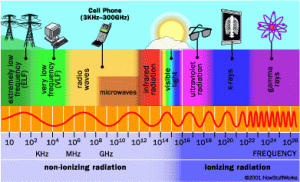Many of the great works of ancient civilization did not stand the test of time and information has been destroyed through decay. This is very unfortunate because mankind might have missed out on some crucial information from ancient ideas. Through time we understand it is important to keep information safely kept. In this Age of Information, we have made great progress with the method of data storage by storing everything in servers instead of physical files. However, the current method of storing information in computers is not perfect and is actually quite fragile with many flaws.
Data stored in the Cloud (Cloud Storage internet service) are actually stored in massive warehouses filled with industrial-sized hard drives, called data centers. In order to prevent losing the saved data, these hard drives must be maintained and consistently operated with a power source plugged in at all times. Not only it is vulnerable and prone to be damaged by natural disasters, but it is also very costly for maintenance and not very environmentally friendly. This is how information is being stored nowadays, and it gets problematic as more data storage is in demand for the future.
A look into Google’s data center
You may imagine, what is the ideal architecture of data storage? Picture this: a small environmental footprint, no environmental damage, low-cost, durable, and zero electricity consumption. How great is that? Well, Microsoft’s Project Silica has the ability to do just that. This technology engraves data with a laser into a piece of glass (specifically quartz glass). It can be stored away without any cost, put it in your back pocket or something because it is durable, and could last for centuries before data begin to deteriorate. It can withstand scratches and up to 1000 degrees Celcius without any negative impacts! Want to erase the data? Melt it away and create new glass for more storage!
Breaking free of data center
How does the technology work?
The laser beam will focus on little nanostructured 3-dimensional blocks called “voxel” in the glass for storing data. The laser will then make physical changes, as a way to encode many bits of information, into one of these voxels permanently. Information is encoded as 2-dimensional layers stacked on top of each other to fill up the 3-dimensional tiny voxels. It will be like stacking up layers of paper to form a block of paper. To read the data, a source of light will be shining through the glass then changes with the light will be picked up by a camera sensor in the receiving end.
Although this is currently in the concept stage with some technical difficulties, the concept has been proven. They have successfully stored a copy of the “Superman” movie into the quartz glass. It is said that over 100 zettabytes of data are in demand for cloud storage by 2023. This revolutionary technology is absolutely necessary, and we could see it being used in the near future.




